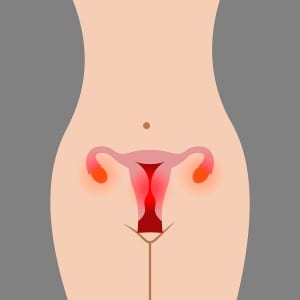 In many cases in which a couple has difficulty becoming pregnant, the source of the problem is a “mechanical” blockage in the female reproductive system. This is the cause of some 30% of infertility cases, of which some 20% are caused by a blocked fallopian tube – a blockage that could prevent the sperm from reaching the fallopian tube and fertilizing the egg, on the one hand, and on the other, prevent the fertilized egg from reaching the uterus. In either case, the blockage prevents the creation of pregnancy, and it, therefore, should be treated.
In many cases in which a couple has difficulty becoming pregnant, the source of the problem is a “mechanical” blockage in the female reproductive system. This is the cause of some 30% of infertility cases, of which some 20% are caused by a blocked fallopian tube – a blockage that could prevent the sperm from reaching the fallopian tube and fertilizing the egg, on the one hand, and on the other, prevent the fertilized egg from reaching the uterus. In either case, the blockage prevents the creation of pregnancy, and it, therefore, should be treated.
A blocked fallopian tube may be discovered during hysterography (imaging of the uterus and its surroundings) or during hysteroscopy – an examination that allows the physician to assess the female reproductive system and to discover the possible reasons for an infertility problem.
If there is a proximal blockage of the fallopian tube, i.e. a blockage that formed in the portion that is closer to the uterus, it can be treated using tubal cannulation – a procedure that is capable of effectively treating a blockage, and is considered to be simple and much easier for the woman than an operation.
As is well known, there are two fallopian tubes in the female body, which connect the two ovaries to the uterus, channeling the fertilized egg to the latter. However, even a blockage of only one fallopian tube can significantly reduce the chance of becoming pregnant – so such a condition will also usually lead to a decision to perform tubal cannulation.
General information about tubal cannulation procedure
Tubal cannulation procedure is a relatively easy procedure, not even necessitating general anesthesia. It is performed using a special catheter, under ultrasound imaging, via the woman’s vagina. Since the treatment is in the closer portion of the fallopian tube, the procedure is not very invasive, and therefore should not cause pain. However, it is natural that it could cause discomfort.
It should be noted that tubal cannulation is generally not performed if the blockage is in the distant portion of the fallopian tube, if there are many scars in the fallopian tube, if there has been past surgery of the fallopian tube, if the blockage is very severe or is there are infections or diseases of the genitals.
Preparing for the procedure
As mentioned above, the tubal cannulation procedure is usually not performed under general anesthesia, but rather only under local anesthesia and not more. You will therefore not need special advance preparation. However, it will be performed only after completion of the menstrual period, in order to ensure that it is not performed when the woman is pregnant.
The course of the cannulation procedure
The woman lies on her back during the cannulation procedure, similarly to her position during a routine gynecological examination. After administration of the anesthetics, a thin catheter, two millimeters thick, will be introduced via the vagina, under ultrasound imaging. At this time, contrast material will also be injected into the area, which will be easily visible on the ultrasound screen and will enable the physician to discern the exact location of the blockage.
When the blockage is located, your physician will select one of two options: inflation of a special catheter balloon that will be introduced to the fallopian tube, or use of a special biological solution that will “rinse” the fallopian tube. Both these procedures will allow the blockage to be opened, so the choice of appropriate method will depend on the type and extent of the blockage.
If, during the cannulation, polyps, for example, are discovered to be causing the blockage (polyps are benign tumors shaped like a long mushroom, that could develop in various places in the body, including in the fallopian tubes), the physician will be able to remove them in the framework of the cannulation procedure, without needing a separate procedure.
The cannulation procedure does not necessitate prolonged hospitalization and is usually performed in the framework of day hospitalization. After the cannulation procedure, if it succeeds of course, the chance to become pregnant becomes significantly higher. The clinical staff will instruct you exactly how to conduct yourself during this period, in order to increase the chance to become pregnant.
Possible adverse events
While the procedure is quite simple, certainly in comparison with a full operation, it could still cause various effects, such as vaginal bleeding, infection, peritoneal inflammation, perforation of the fallopian tube wall and of course – lack of success in opening the blockage in a way that allows the fallopian tube to function properly. For each of these effects, there is an effective solution, and none of the side effects are particularly common.
 Patients Log In
Patients Log In 










